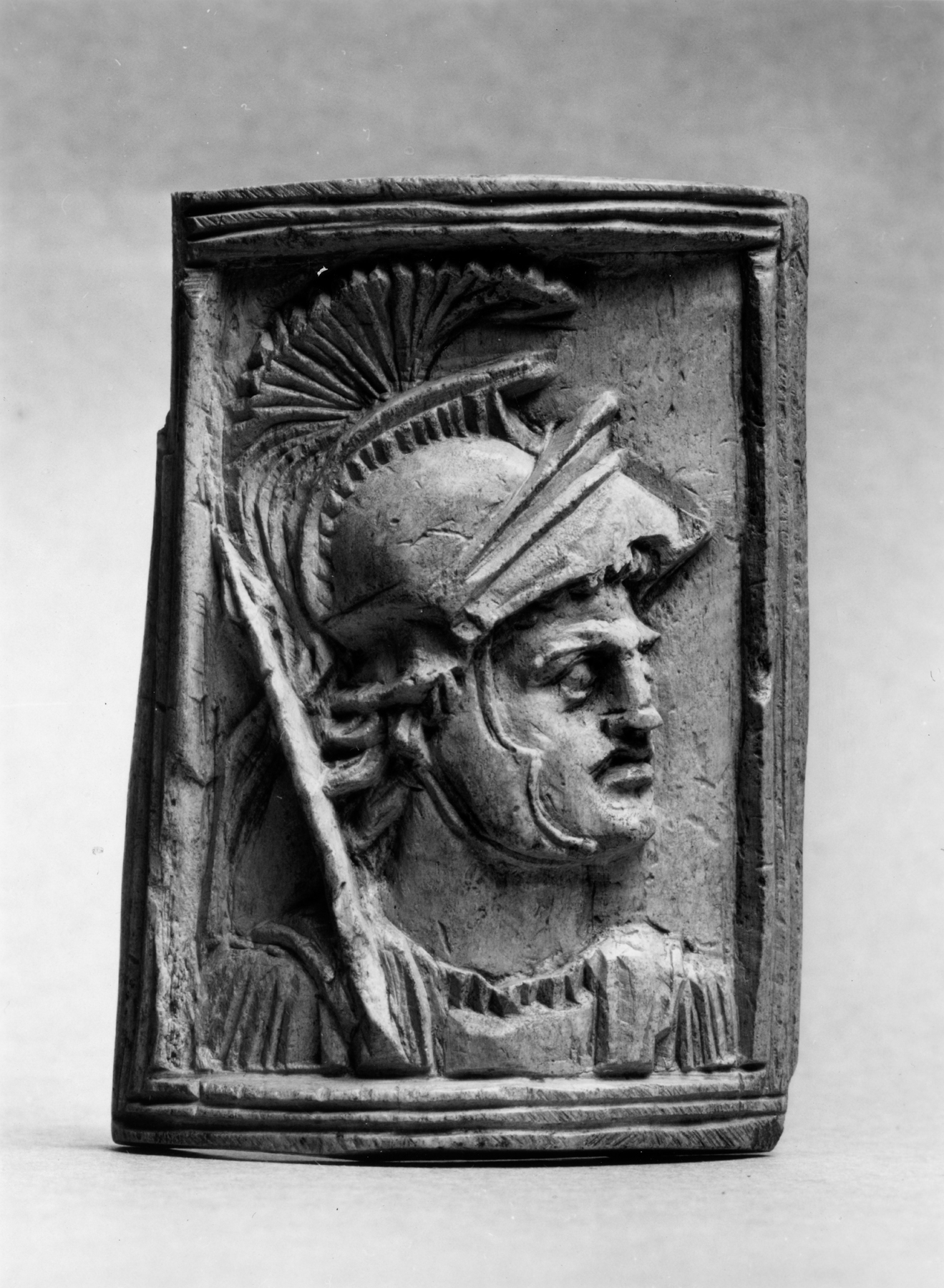Soldier
(Roman Empire )
The soldier on the plaque wears a tunic and cuirass and a crested and plumed helmet with cheek guards. His spear is beside him. The modeling is bold and chunky but not unaccomplished.
The left side of the frame and the front of the soldier's helmet are both chipped. The plaque is sharply convex on a vertical axis and probably decorated a cylindrical box or a piece of furniture. It must have been secured by vertical framing that overlaped the grooved frame on the sides since no attachment holes exist.
Plaques of this type normally have been attributed to the 3rd or 4th century, but the similarity of this one in size and style of carving to a plaque from a 1st century BC tomb at Cuma, Italy, raises the question whether this and perhaps other plaques may not be much earlier in date.
Provenance
Provenance (from the French provenir, 'to come from/forth') is the chronology of the ownership, custody, or location of a historical object. Learn more about provenance at the Walters.
Dikran Kelekian, New York and Paris [date and mode of acquisition unknown]; Henry Walters, Baltimore, 1923, by purchase; Walters Art Museum, 1931, by bequest.
Exhibitions
| 2009-2010 | Heirs of the Empire in North Africa-The Kingdom of the Vandals. Badisches Landesmuseum, Karlsruhe, Karlsruhe. |
Conservation
| Date | Description | Narrative |
|---|---|---|
| 8/18/1982 | Treatment | cleaned; examined for condition |
Geographies
Roman Empire (Place of Origin)
Measurements
H: 3 3/8 x W: 2 3/8 x D: 13/16 in. (8.5 x 6 x 2 cm)
Credit Line
Acquired by Henry Walters, 1923
Location in Museum
Not on view
Accession Number
In libraries, galleries, museums, and archives, an accession number is a unique identifier assigned to each object in the collection.
In libraries, galleries, museums, and archives, an accession number is a unique identifier assigned to each object in the collection.
71.615




